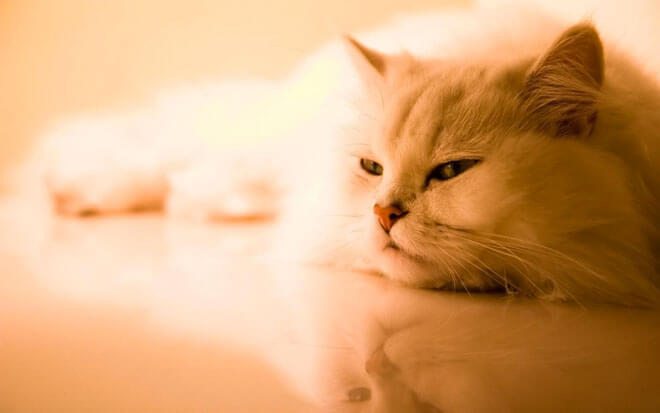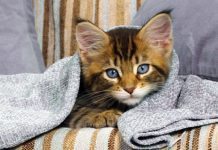
Among the countless cat breeds, the Persian cat is undoubtedly one of the most recognizable- is it because of their unparalleled beauty? Let’s find out together, analyzing the characteristics of Persian cats, their history, Persian cat’s temperament, and other curiosities about this kitty that has managed to steal the hearts of cat lovers all over the world.
History and origins of the Persian cat
The Persian cat originally hails from Asia Minor and was brought to Europe by the Italian explorer Pietro della Valle, in 1626, upon his return from Persia. In those days, because of their long and thick hair, no distinction was made between the Persian breed and the Angora breed, and they was only years later that the two cat breeds were differentiated. Pietro himself first emphasized the distinction in his manuscripts, describing the Persian cat with very long, silky and gray hair, and as smaller than the angora cat , which instead had white hair. He also points out that the cats in the Khorazan province in Persia had arrived from India with the Portuguese who, unlike the Khorazan cats, were white.
As for the length of the cats’ hair, the researchers claim that the recessive gene for long hair has spontaneously appeared in the feline populations of the cold mountainous areas of Persia. Even Frenchman Nicolas Fabri de Peiresc, a scientist, archaeologist and advisor to the Aix-en-Provence parliament, who was thrilled with the beauty of Persian cats , decided to take some specimens on his trip to Turkey. From France, their fame soon arrived in Great Britain, where for a time they were nicknamed “French cats”. In England these little cats quickly became popular, Queen Victoria herself had two beautiful blue Persian cats.

Persian cat breed standard
Persian cats were the first to participate in a Catholic show in 1871 at the Crystal Palace in London, organized by Harrison Weir, who recorded the first standard of Persian cat breed in 1889. From the early 1900s, the Persian cats were exported to the US and their popularity spread throughout the world. A curious peculiarity of this feline is that the male Persian cat is far bigger than the female, weighing in at almost double! The first one, in fact, weighs about 7kg while the females only 3.5kg. The Persian cat’s coat, in order to conform to the breed standard, must be fine and silky and soft to the touch.
The length of the hair and the undercoat should range between 10 and 15 cm, reaching 20 cm at the level of the throat. There are many Persian cats breeders, and there are many combinations of coat colors: about two hundred. Among the most common is the solid color (white, cream, black, blue, chocolate, lilac and red) and, for tortie type, shades of turtle black or blue-cream, but also chocolate or lilac.

Persian cat care, feeding
The Persian, being a longhaired cat, requires special attention when it comes to grooming. It is therefore important to brush the cat daily, in order to avoid knot formation but above all to minimize the amount of ingested hair. Another important thing is cleaning the cat’s eyes, because they have a tendency to tear up. One “defect” is due to the shape of the nose which, because it is flush with their face, does not allow the discharge of mucus.
As far as Persian cat food is concerned, it is important to remember that these beloved felines live predominantly at our side, often lying comfortably on our sofas. That being said, it is indispensable not to exaggerate with the quantity of food and it is advisable to alternate dry food with fresh and healthy foods such as vegetables or white meats. As cats don’t readily chew, remember to smooth everything and never forget to leave a bowl of fresh water always at their disposal.
Persian cat temperament
The character of the Persian cat is very sweet and affectionate. Ever since they are small, the Persian kittens love the company of their human friend and spend most of their day sleeping. The Persian cat can be safely defined as the pet cat par excellence. If you do not have a garden or cottage, do not worry, a Persian cat in an apartment will definitely not have any problems! Persian cats do not need large spaces, and pass their “days in slow motion style”, walking from one room of the house to another.

Persian varieties
The Fédération Internationale Féline (FIFE) divided the classification of the Persian cat into 3 groups, choosing a color breakdown for each group. Let’s discover the varieties of Persian cats :
- Uniform or solid: they should not have stripes or tabby marks. The lack of streaks in the cat is due to the presence of the tigration inhibitory gene. All colors are available (white, black, blue, chocolate, lilac, red and cream). The color of truffles and plantar bearings must resume the color of the coat, except for the white varieties and creams in which they are pink. The color of Persian cateyes must always be copper-colored and must be brilliant, except for the three varieties of white Persian that may have copper, blue, and nonmatching eyes (one eye is a different color than the other.) We note that, very often, cats with blue eyes are born with problems of deafness that do not resolve themselves in adulthood.
- Chinchilla Persian cat: the silver chinchillahas the base of the white-silver coat. The eyes are greens and have the characteristic of having the coat-colored pigmentation colored truffles and lips, mainly black or, more rarely, chocolate, blue or lilac. The golden chinchilla is characterized by a cream-colored topcoat that seems to fade to a golden color. The eyes of the cat, lips and truffles are brown. The dark pink truffle; brown plantar bearings; Blue or green eyes. Shaded silver and shaded golden varieties are usually darker.
- Smokey Persian cat: The hair of this Persian is as if it were only half color. In shaded variety, the cats’ fur is only one-third colored; In the Shell pigmentation, this is reduced to an eighth. The eyes must always be orange.

Persian cat colors
- Party-color: The most curious feature of this variant of Persian cat is that they are always female; The colors in this case are mixed together and may have the following shades: black tortie, blue tortie (blue-cream), chocolate tortie, and lilac tortie. The eyes must be orange.
- Colored Persian cat: There are different varieties of this coloring: blue point / tortie, chocolate point / tortie, seal point / tortie, lilac point / tortie, red point / tortie, cream point / tortie. The color is more intense in areas where the temperature is lower, then on the muzzle, on the cat’s ears, on the tail, on the paws, and, with the males, on the testicles. The rest of the body is light in color, ranging from white to beige, depending on the color. The eyes must be blue.
- Twp-tone Persian cat:Two- color or tricolor coats must be formed from a white part and a uniform color (remember that uniform colors are black, blue, chocolate, lilac, red and cream). They are defined as two-color when white is 1/3 and color 2/3 of the coat ;The color must be present on the back, head, nose, neck, tail, and paws of the cat (sometimes 50% white and color cloaks are also accepted).
- Harlequin Persian cat: Uniform color is 1/3 and white covers the remaining 2/3 of the coat.To be recognized in the standard, there must be at least four spots of color on the back.
- Van: Color is present only on tail and head. The stitches can be solid or Tabby. The eyes must be orange, despite this; very rare cats with different colored eyes (an orange and a blue eye) are also allowed.
Tabby Persian Cat
Tabby Persian cats have kept the original coat of the wild cat. The standard recognizes the colors black, chocolate, lilac, red, cream, blue and black tortie, chocolate tortie, lilac tortie, cream tortie, blue tortie. Depending on the color, nicknamed silver Persian or cameo cats. There are many variants of coat design, which are drawn on a yellow-gray base, including:
- Persian catmarbled tabby (blotched): characterized by wide lines and a M-shaped forehead, pointed lines on cheeks, necklaces on the throat, circular marks around the tail and paws. They also have butterfly wing designs on their shoulders.
- Persian cat tabby tiger(mackerel): the cloak is characterized by narrow and parallel lines that are perpendicular to a line running along the back.
- Persian cat spotted tabby (spotted): presents round, evenly distributed spots, until the abdomen. In the tabby variety the truffle is red-brick and has a black border. The cat’s eyes should always be bright orange.
Persian cat breeders and price
In USA, being a well-known feline breed, there are several Persian breeders spread across the States. The cost of a Persian kitten varies, in particular, depending on its aesthetic appearance and may range from 500 to 1,000 $. As always, we recommend that you only go to a specialized Persian cat breeder can provide you with relevant documentation and helpful tips for the first few days with your new kitten.













